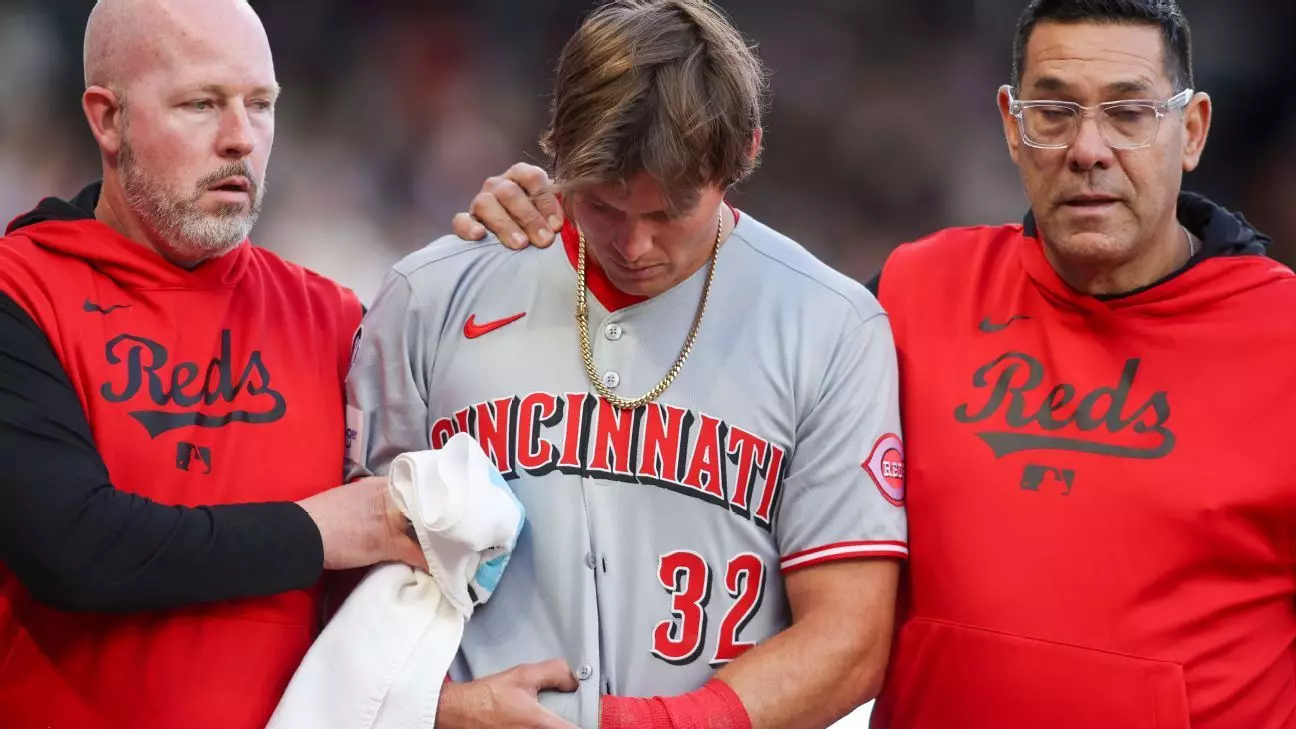In the high-stakes world of Major League Baseball, where every play can define a season, young players often throw themselves into the fray with unrestrained passion. Tyler Callihan, the Cincinnati Reds’ rookie left fielder, epitomized that spirit during a recent game against the Atlanta Braves. However, what was a moment of unfiltered athletic ambition quickly spiraled into tragedy as Callihan violently injured his left forearm while attempting a daring sliding catch. This incident encapsulates not only the unpredictable nature of sports but also highlights the thin line between heroism and heartbreak in the lives of burgeoning athletes.
The Incident: A Moment of Determination
With the Reds trailing 4-0 in the third inning, Callihan sprinted to intercept a flyball hammered by Braves’ slugger Matt Olson. The sheer intensity of his pursuit demonstrated a rare combination of determination and naïveté, showcasing the instincts of a player eager to etch his name into baseball lore. Yet, as he collided with the left-field wall, the moment turned from a potential highlight into an agonizing misfortune. After briefly securing the ball, one fateful crash revealed the precarious nature of the game—a stark reminder of the physical toll it exacts.
What could have been celebrated as a sensational play became a grim embodiment of the risks players face. The heartbreaking moment when Callihan clutched his arm in agony resonated throughout the stadium, creating an atmosphere of unity among teammates and spectators alike. Base runner Austin Riley managed to score, unaware of the extent of Callihan’s injury, showcasing the often-chaotic nature of live sports where the line between excitement and devastation is razor-thin.
Repercussions: Pain and Recovery
In the moments following the incident, Reds manager Terry Francona expressed his empathy for Callihan, declaring, “He’s such a good kid, you feel terrible for him.” This empathetic acknowledgment reveals a profound understanding of the emotional ramifications that accompany physical injuries, especially for a rookie trying to make his mark. Following his walk of pain back to the dugout, it was confirmed: Callihan was facing surgery, as doctors prepared to set his broken forearm.
As athletes, the mental burden of injuries often proves more daunting than the physical pain itself. For a player in just his fourth Major League game, such a setback could ripple through his confidence and career. The echoes of similar injuries endured by other players in the league serve as stark reminders of how one fleeting moment can derail even the most promising journeys.
Perspectives from the Dugout
Braves’ manager Brian Snitker reflected on Callihan’s injury with compassion, noting the player’s commitment to his team. “He’s just laying it out there for his club,” Snitker commented, underscoring the inherent camaraderie and respect that defines competitive sports, even among rivals. Such sentiments bolster the notion that baseball, at its core, is not merely about competition but also about the human stories woven through each game.
While the Reds faced a crushing 4-0 defeat, the loss overshadowed significant aspects of the game, including AJ Smith-Shawver’s near no-hitter, illustrating a harsh reality of sports where triumph and tragedy often coexist. As fans and players from both teams processed Callihan’s injury, the immediate game outcomes felt trivial compared to the young player’s plight—reminding everyone of the true stakes of the game: the athletes’ well-being.

